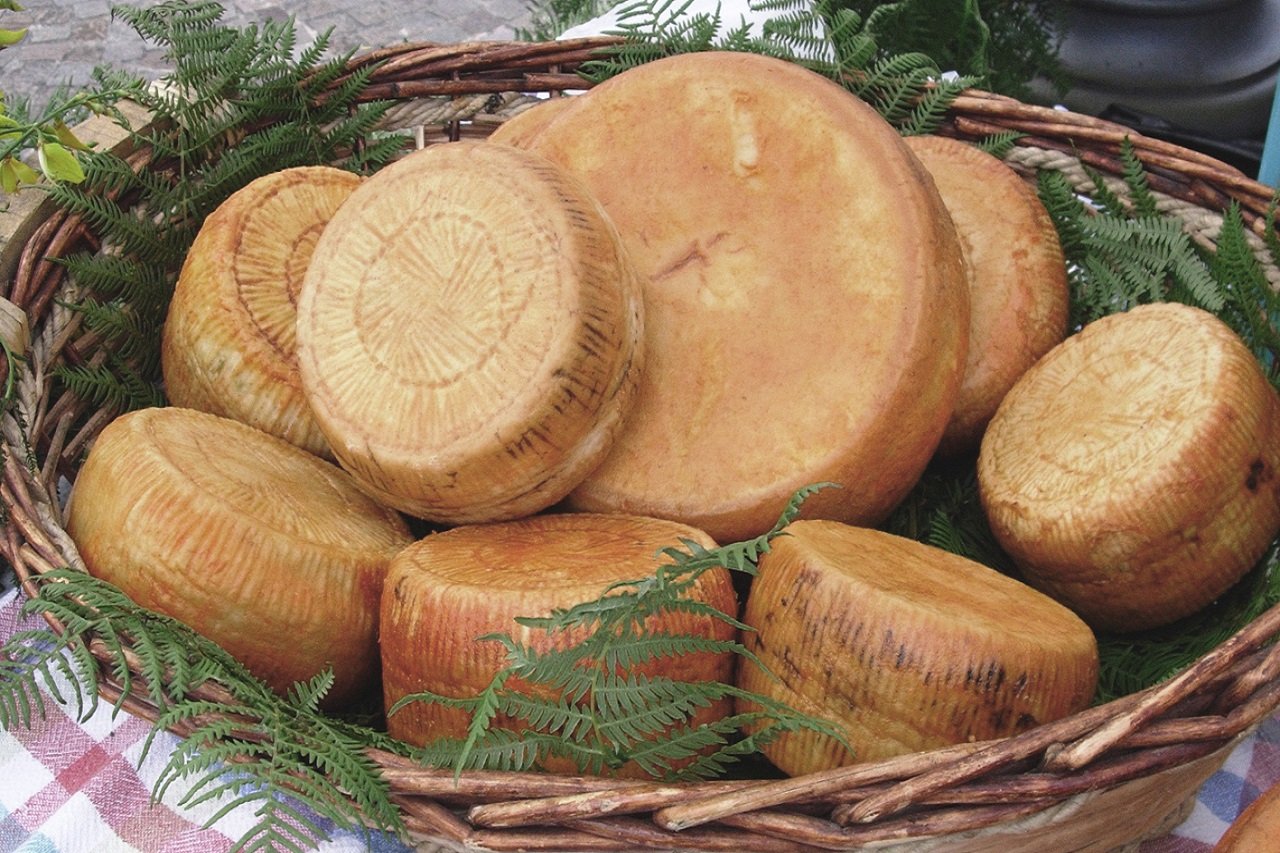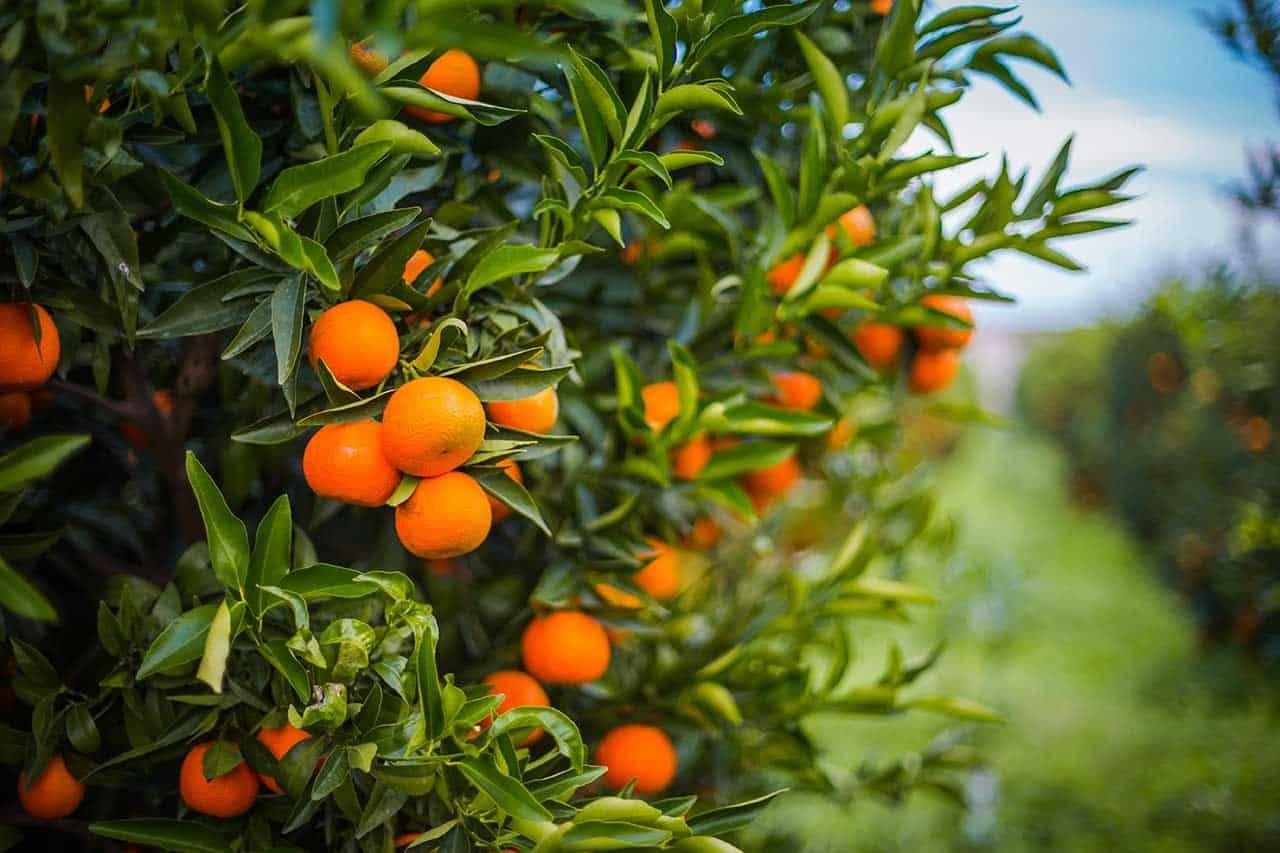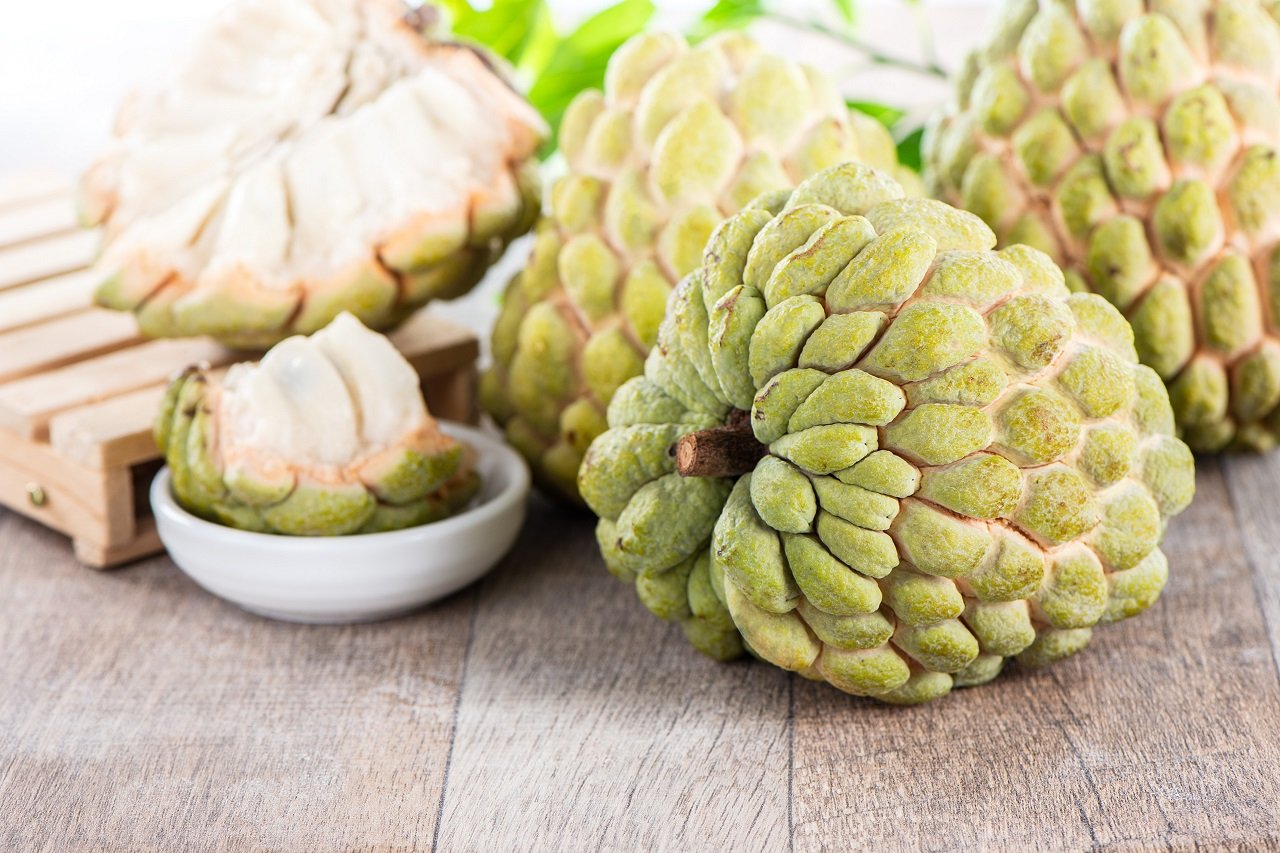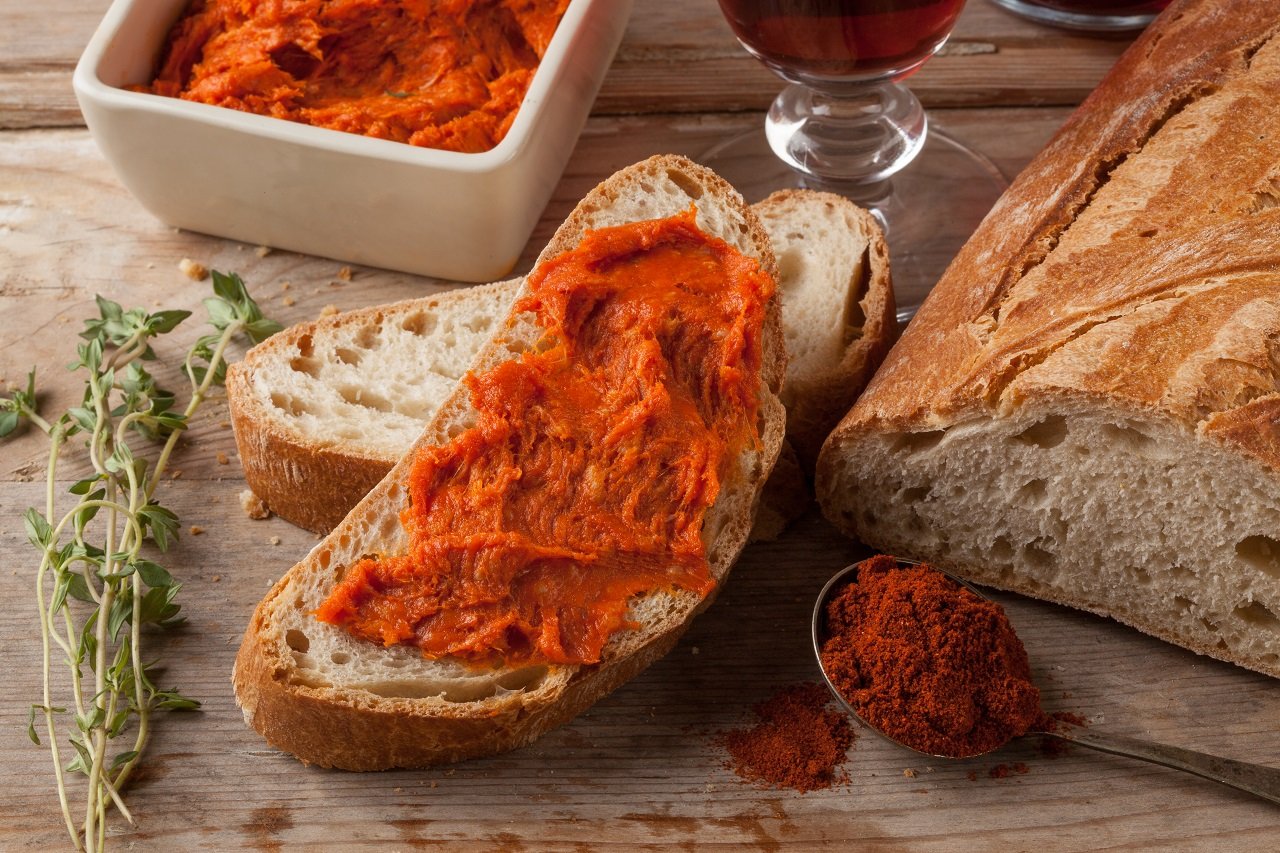Caprino d'Aspromonte is obtained by processing milk heated to 36-37 degrees, kid rennet is added, and once it has coagulated, the curd is broken with the 'ruotolo' until it is the size of a grain of rice. After it has collected at the bottom, the curd is extracted and transferred to reed baskets, where it is pressed by hand. After a few hours, the cheese is salted (dry); for the maturing process, the moulds are placed on a cane 'cannizzo' or wooden shelf in a cool place. On the compact rind, white in the fresh cheese, yellow-brown in the ripened one, the marks of the "fiscella" are evident. The paste is raw, ivory white and soft, but tends to become hard and dark as ripening progresses. The faces are flat, with a diameter of 18-20 cm, a thickness of 6-7 cm and the weight varies from 1 to 2 kg. The flavour is sweet tending to acid and also releases a hint of wildness. Caprino d'Aspromonte is marketed fresh in the Aspromonte area in the province of Reggio Calabria as a table cheese or aged for grating.
Food and Wine Excellence
Management of food and wine excellence
Clementines of Calabria
The Protected Geographical Indication 'Clementine di Calabria' designates exclusively the fruit of the Clementine belonging to the following cultivars, clonal selections, gem mutations: 'SRA 63', 'Spinoso', 'Fedele', 'Comune', 'Tardivo', 'Hernandina', 'Marisol' and 'di Nules'.
The main production areas are in the province of Reggio Calabria and the Sibari Plain, which are suitable for growing 'Clementine' citrus fruit. Soils suitable for growing 'Clementine di Calabria' are of medium texture with a silt and clay content of less than 60% and a limestone content of no more than 15%. Maximum unit production is 350 q.li per hectare for all cultivars, clonal selections and bud mutations allowed.
The citrus fruit must have a smooth epicarp with numerous dark orange oil glands; spheroidal shape slightly flattened at the poles; minimum diameter of 16-18 mm; juicy, uniform orange, deliquescent and aromatic flesh; no or few seeds and a minimum sugar content (0Brix) of 10. Clementines are rich in vitamins, aromatic, very sweet and easy to peel. They can be enjoyed fresh or made into candied fruit, jams, juices, sorbets, desserts and liqueurs. Excellent as an ingredient for flavouring meat or fish.
The Bergamot
The protected designation of origin 'Bergamot of Reggio Calabria - essential oil' is reserved exclusively for the essential oil extracted by the cold-pressed method from the fruit Citrus Bergamia Risso in the varieties Femminello, Castagnaro and Fantastico. The origins of the plant are shrouded in mystery and historians tell of its presence in 1750 in the Fondo dei Giunchi in Reggio Calabria, where it has its natural habitat. In Calabria, the bergamot processing industry has a prominent position because it is the only region able to cultivate the citrus fruit. The 'Bergamot of Reggio Calabria - essential oil' must be liquid, mobile, clear, sometimes with a solid deposit; green to greenish yellow in colour; with a characteristic, pleasant, fresh smell, reminiscent of the pericarp of the Bergamot. The valuable essential oil obtained from it is exported all over the world, especially for its use in cosmetics and perfumery. The citrus fruit has made its way into haute cuisine and pastry making, thanks to the recipes and desserts of pioneering chefs and pastry chefs from Reggio Emilia who have believed in this unique ingredient, to the point of involving international culinary masters to include the fruit in their menus, with brilliant results appreciated by connoisseurs and gourmets. The peel, suitably treated, can be used to flavour first courses, main courses and desserts. Its aroma imparts an incomparable flavour to candies and candied peels and the essence is excellent for a fragrant and delicious tea or sorbet. The juice, with its bitterish taste, is used to make liqueurs, syrups and excellent supplements. A fruit of the Calabrian land that also has health benefits with therapeutic principles against viruses and bacteria, antioxidant, anti-rheumatic, antipolypukaemic and vaso-protective properties, offering useful tools to normalise triglycerides, cholesterol and glycaemia. In order to spread knowledge of this precious citrus fruit and its impact on the local economy, the Bergamot Museum has been set up in Reggio Calabria, displaying the ancient tools and images that tell of more than three hundred years of culture, history and traditions on the citrus fruit and its use.
The Annona of Reggio Calabria
Reggio Calabria's famous 'Falcomatà promenade' is home to many valuable Mediterranean and tropical plants, even large ones. But the 'exotic' essences do not only concern the 'most beautiful kilometre in Italy' of D'Annunzio's memory, but also the Reggio Calabria hinterland and neighbouring municipalities. The Annona has been a renowned example of this for several decades, certified by the municipal administration De.c.o with the name 'Annona di Reggio'.
The term 'Annona di Reggio De.c.o.' refers to varieties of the species Annona cherimola Mill and in particular acclimatised commercial varieties of Spanish origin including Fino de Jete and Campas (less common) as well as the so-called 'local varieties' or 'deformed varieties' and appears bright green even when ripe and is homogeneously cordiform (looks like a green heart) or conical in shape, with a very thin skin and homogeneous, medium depressed areolas. Its flavour is sweet and aromatic of the 'exotic' type with soft creamy-white flesh. It has a high sugar concentration and is slightly juicy and rich in Vitamin C.
Traditionally, various confectionery products can be made with the fruit, such as ice cream, sorbet, baba, jam and various desserts, but recently, innovative and delicate variants have been proposed: ricotta and annona cakes, annona cake and annona syrup tart. The Annona reggina, like many other niche and De.c.o. branded products, has great value in terms of biodiversity, always arouses great curiosity for its external characteristics and becomes a true gastronomic passion after tasting it the first time.
The Arancino
His majesty the arancina... the undisputed king of the rotisserie. It is to all intents and purposes a complete dish, as the saffron rice encloses a heart of veal ragout and peas inside, while the crispy breadcrumbs make it easy to carry. In addition to the original with meat sauce, it is easy to find ones with spinach and mozzarella, butter and ham, but over time the variations have become so many that it is not uncommon to come across arancinerias, small places that only make arancine and offer at least 50 different flavours. The biggest diatribe in which this must-have is involved concerns its name. In fact, its majesty becomes king or queen depending on the city, if in Catania it is 'arancino', in Palermo it is known only and exclusively as 'arancina', claiming its similarity in colour and shape to an orange. Today, however, the shape that dominates is the conical one, and here's a little tidbit for connoisseurs: although the collective imagination wants the first bite to bite into the crunchy tip, in reality the correct sense is quite the opposite. You got it right, the hand wraps around the cone with the tip downwards, so the arancino ergonomically follows the shape of the hand allowing a firm grip. No one would want to lose pieces of it by eating it, this firm grip will make it impossible to lose even a grain!
The 'nduja
The 'nduja, included in the list of Traditional Agrifood Products (P.A.T.), is a typical spicy, fine-grained sausage whose main characteristic is its spreadability. It is among the most renowned typical Calabrian products and its main production area is concentrated in the municipality of Spilinga (VV), a town located in the centre of the Poro plateau. The preparation of 'nduja, considered poor due to the origin of the ingredients, is a gastronomic experience that makes one reflect on the artisan traditions of certain products that guarantee their genuineness. It is made from a mixture of pork meat - fatty and tasty parts of the pig - mixed with copious amounts of local red chilli pepper - sweet and spicy -, which gives the sausage that distinctive reddish-brown colour. With maniacal care, this product is packed into the so-called pork gut and tied at the end, before moving on to the smoking stage. The organoleptic characteristics of the product have remained unchanged over the years thanks to traditional recipes handed down for centuries and jealously guarded by the producers. In the kitchen, well-known international chefs use 'nduja in their recipes because it gives a touch of temperament and is tasty and pleasantly spicy. It is best enjoyed au naturel: spread on slices of toasted bread while still warm or on focaccia. Excellent with semi-matured cheeses or to give an intense flavour to meat sauce and tomato sauces. Particularly delicious and appetising for preparing sauces to accompany tasty meat dishes.





